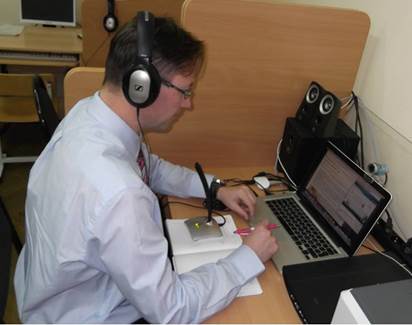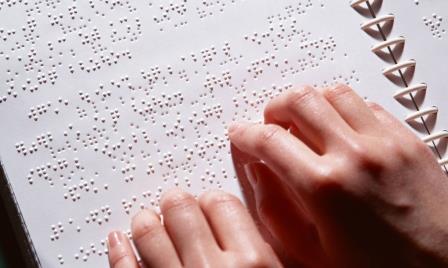Introduction
The educational reality of hospitals kindergarten teachers is determined by diagnoses, living conditions and drastic changes in the quality of life of children, physical and mental changes resulting from illness and the hospital environment. Hospitalization as such is another significant unfavourable factor.
The demands on teachers are considerable and it is necessary for their work characteristics to be analysed and described, as they provide a framework for pedagogical opportunities. This is key to understanding the practice and ensuring the optimization of the educational process in the direction of individualization of needs so as to ensure the maximum well-being of a child and the development of a child's potential despite the challenging conditions.
This study deals with the design of hospital kindergarten teachers' work. In our report, we focus on the characteristics of the work of four kindergarten teachers, who must be able to create an educational space from the hospital environment so that sick children can be well educated. The aim of the study is to reveal the working characteristics of kindergarten teachers at a regional hospital in the Czech Republic. A qualitative research design using a semi-structured interview and observation method was chosen.
1. THEORETICAL FRAMEWORK OF THE STUDY
In hospital schools, educational goals and contents are determined by several factors. Above all, it is necessary to take into account the child's state of health, disposition and current needs [2]. Education is conditioned not only with the consent of the parents but also with the consent of the attending physician, who assesses all the circumstances. In addition, the educational offer of teachers can be interrupted at any time by the acute state of the disease, the requirements of demanding treatment regimens, medical and nursing procedures, hygienic requirements, the risk of infection, etc. [6]. These factors significantly affect the characteristics of work and attitudes of hospital kindergarten teachers and their outcomes [3].
Research in the field of education in schools at medical facilities is meager in the Czech and foreign environment. In addition, the network of these schools is shrinking with unprofessional interventions, which Mareš and Žofka [7] reflect in their study and they defend the legitimacy and importance of these schools. Plisková [10] then specifically deals in her rigorous work with the issue of education of preschool children and the role of a hospital kindergarten teacher. In the Czech Republic, research is more focused on primary schools at medical facilities. Plassová [9] obtained more detailed data on teaching in schools at medical facilities. In her diploma thesis she deals with the issue of education of primary school pupils who are also patients in medical facilities and described the specifics of this environment.
Abroad, the dissertation of Carstens [1] deals with the overall context of hospital education. The second major foreign work is a study by Zazryn et al. [14]. In their research, these authors examined the views and attitudes of pupils, students, parents, health professionals and teachers to education in health facilities. Another important article is the study by Steinke et al. [12], when the aim of their research was to find out how teachers in hospitals perceive their work, educational programs and practice.
In general, the dominant theoretical model for describing job characteristics is the Job Characteristics Theory model by Hackman and Oldham [4]. This model was applied in pedagogy by researchers Kass et al. [13]. The researchers applied the model and used it to investigate the reasons for boredom in high school students. One of the most up-to-date and integrated concepts is the model of Campion, which sought to structure his concept to include all important aspects of the work from previous models. Morgeson and Humphrey [8] followed up on this work and decided to identify all job characteristics that could affect job outcomes and create three central categories – motivational characteristics, social characteristics and contextual characteristics. Contextual characteristics or work context of the work includes in a broader sense the environment and conditions in which the work is performed. Social characteristics represent the wider social environment in which the job is performed. Motivational characteristics then focus on aspects of job enrichment [8]. It is the design of the work that influences the subjective experience, behaviour of teachers and their work outcomes, which can then significantly affect the educational outcomes of children.
On this basis, the presented study focuses on the working characteristics of hospital kindergarten teachers, as they are subjectively perceived and verbalized by teachers. Specifically, work characteristics are analyzed and described with a focus on contextual, motivational, social areas and the specifics of work in a hospital environment.
2. RESEARCH METHODOLOGY
The aim of the presented research was to analyze the opinions and experiences of selected kindergarten teachers who work with hospitalized children in various departments of a large regional hospital. The research was carried out in the context of qualitative design using the method of semi-structured interview and observation. The research was originally carried out for the needs and writing of the author's rigorous work.
The main research question was identified: What are the working characteristics of hospital kindergarten teachers?
The research involved four participants with more than ten years of experience working in different departments of a particular hospital. All the teachers have been working in education for more than ten years. Three teachers have been working in a particular hospital for more than twenty years, one for more than ten years. All the participants have university education.
The obtained data were processed on the basis of coding analysis. The transcripts were repeatedly read, segmented, annotated in search of a significant context. For the needs of rigorous work, the first analysis was carried out, where the overall context of kindergarten teachers was determined [10]. During the reading and analysis, significant, relevant segments were identified and assigned codes. These segments vary in length. Gradually, they were systematized and grouped into categories according to the meanings they bore. Subsequently, the categories were subjected to further analysis in order to answer this research question, when the data were re-studied and analyzed.
Understanding of data was accompanied by a study of professional literature, theoretical and practical studies, as well as valuable consultation with colleagues.
3. RESEARCH FINDINGS
The aim of this section is to look in more detail at the information provided by the teachers in the interviews, from the subjective perspective of the participants as experienced from their point of view. We believe that these statements can provide a more detailed insight into what job characteristics are and how teachers think about them. Below we analyze the occurring categories and their characteristics and contents.
3.1 Contextual characteristics
Hospital Kindergartens offer special support and help to families who are burdened by serious chronic illness of children, when «...it's a different world…». In analyzing the data, all the teachers perceived the environment and conditions for their work as significantly specific and different.
1. Non-standard working environment
Among the first important points, the teachers reflected the hospital premises themselves. The specific hospital is not adapted architecturally or organizationally to create suitable spaces for education. In addition, the specific hospital is an architectural monument. «…And then, as far as this building is concerned... but it's an architectural monument... actually a state-protected building, so nothing can be added» (PJ). Any interventions in the direction of modernization of the premises are inadmissible.
Teachers use various toys, materials and aids to educate children and develop their abilities and skills. They come to see the patients to wards, where they carry all the aids with them. In most cases, however, there are no rooms in the department where materials and aids can be kept and stored. The specificity is the predominant individual teaching at children's beds in hospital rooms, «simply just in bed...». This form of teaching is demanding because it is limited by limited space, possible disruption of the personal zone of children and very frequent permanent presence of parents.
In the case of group teaching, the situation is also more complicated. In the hospital, areas intended for children and playrooms are being cancelled. In their own words, the teachers add that they have lost their own spaces suitable for education and are forced to teach in canteens under very demanding conditions, when the education is carried out together with the primary school. «Just a canteen, where they are together with a primary school children…». These rooms are being transformed into individual rooms from which hospitals can benefit, «that every clinic has to make money for itself…». This has bad consequences for children «...For example in the dermatology ward… Everything itches those kids, those kids need to let off the steam… right? They need to roll on the ground, play, a little bit... jump... and have nothing!». Educating in canteen requires a high degree of tolerance, adaptation and organization from teachers, «only with a minimum of space and you adapt».
2. Inconsistent work environment
Teachers work according to plans, which, they admit, they often have to revise and individually adapt. The participants both define the environment as highly variable and full of change. «...here, the situation changes not from day to day, but from hour to hour… (PJ)». All activities must be adapted to the health of the children and to the hospital environment, treatment requirements and the entire schedule of the ward: «the kid doesn’t want to do anything… he is sick, doesn’t care. So I have to come up with something new right there…».
As a result of often unpredictable changes, teachers characterized their work as significantly responsible, «fragmented» and inconsistent. «…I don't have the continuity... that's the thing that sets us apart… and therefore... it is in the areas...». This fragmentation is manifested in all spheres – in the relational level, «also in the emotional level... and in establishing those contacts... that it is terribly fragmented...». However, this inconsistency is also reflected in the interruption of the educational offer and programs. «They (the paramedics) don't ask if he finished the drawing or the product… that's not important at the time». The children come and go for examinations, even during the class. They are released into their home environment, their condition suddenly worsens or they have to go for an examination. Teaching can no longer take place.
3. Intensive work environment
For the needs of education, the teachers come to individual departments to see the children. «Each one has one… two departments». One-to-one education by the bed or working in small groups in demanding canteen conditions requires intensive work effort and organization from the teachers. «…That time, the whole time it is you who fills the time …and you are there the source of the fun, that work, that content… so this is I think very draining, too…» Here, they compared the possibilities of teachers of traditional kindergartens, where groups of children are larger. Children are thus able to entertain themselves more often.
The teachers also pointed out the possibilities of outdoor spaces that they cannot use in the hospital. Outdoor spaces allow for further independent interactions of children with each other and attractive stimuli, thus reducing the intensity of work effort in the opinion of teachers. They themselves do not have these options, as this is not possible in the hospital or only exceptionally in the case of the children who are for example in the eye department. «And the OUTSIDE gives you an awful lot of possibilities».
4. Superiority of the medical point of view over education
The primary goal of everyone in the hospital is to heal, improve the conditions and quality of life of children and their loved ones. This is a crucial task «…There they are dealing with such important shit that... I am sorry... that it simply... and all these stories that pile up after the years …» (PL). This fact completely changes the context of children's education in hospitals: «…that you are not the most important thing there, that you are on the less important one... that we are like that... and that we have to fit the schedule gaps... that here simply the mission is more important…» (PK). The teachers themselves perceived education as a supporting element aimed at ensuring the well-being of a child, improving the quality of life of a child and their whole family.
3.2 Social work charactetistics
A sick child, parents, teachers and healthcare professionals come to interactions in hospitals. This characteristic describes the specific relationships in the hospital, the extent to which teachers are dependent on other professionals in these relationships and how they work together. These characteristics also include the possibility of creating informal friendships in the workplace.
1. Paternalistic attitude of health professionals
A child patient is cared for by a stable group of health professionals who perform joint tasks in teams in the relevant area. Healthcare professionals' goals are always superior and determinative for this environment. «…It took me horribly long time to get used to the feeling that we aren’t the most important there, that you are the second…» Here, too, the teachers verbalized sometimes with outrage the superior attitude of the paramedics towards the child and their loved ones. «Neither do I like the way they behave to children as to patients or how they treat them. Like really superior… Like the children are those little things… and they really can’t do anything here and I make decisions here, like the «big boss…» They reflected that children were required to be absolutely obedient and to submit to treatment, regimen, instructions. This requires adaptation of both the child and the parent. In addition, parents may not be able to handle the situation and may not be able to provide a safe space for the child. «They can only see that… here we are to treat…» Due to this fact, a child also loses a significant anchoring element in the persons of his or her parents and can thus become and often becomes an inferior subject in the whole process.
However, the teachers towards themselves also perceived this paternalistic, superior attitude of health professionals when they mentioned working in a multidisciplinary team. In almost all cases except one, they verbalized that they were not accepted into the teams. Only in one case did the teacher feel like a full member of the team working with children in the oncology department. In other cases, teachers tended to verbalize non-admission to the team, even with pejorative statements, «…that they see as if…, as if we are weirdos…». Nevertheless, they expressed that information from health professionals was indispensable for them and, on the other hand, that they themselves were an important source of information for health professionals.
2. Depersonalized social interactions
Teachers very often spoke about the depersonalized and cold approach of health professionals towards children. They often mentioned a certain reductionism and objectification of the child to the disease and to individual diagnoses. «I don’t want to see her as fistula in ear… I want to see Sabinka…» They gave examples where professionals often act with little respect for child patients, sometimes impersonally, according to the protocol, to achieve a therapeutic result, often at the expense of a child's psyche.
They also perceived these depersonalized relationships towards the loved ones accompanying children. «And he is in that room all alone… Where the teacher than comes, and after all she gives him some task, some tasks… that the mother will help… that it keep him somehow busy,…that he is not bored…» According to the teachers' experience, the loved one who accompanies the child loses his or her certainty in the hospital and get into a mental discomfort due to the fact of illness and due to the stay in the hospital. They are alone in the room with the children. They too must respect the department's rules, instructions and regulations.
3. Changeable relationships
Temporal relationships are an important attribute of the medical environment. The variability of relationships is reflected in hospitals in all directions and at all levels. «It is reflected in relationship levels too…» In the hospital, the teachers must be able to establish relationships with children and parents very quickly. Children of various ages, with various diseases, come to the hospital for short-term or long-term stays. The teacher offers activities to all children without differences. Nevertheless, they noted that it was the parents hospitalized with their children for a short time who refused the activities offered, «no, we don’t need anything… we don’t want anything…» because they consider them useless.
On the other hand, they intensively reflected the importance of education and interactions in children who visit the hospital regularly or are hospitalized for a long time. «Here are children, who can be here for up to several weeks, months…» Here again, the problem is that in hospital rooms, the lives of small patients take place in bed in front of other patients. The children in the rooms are constantly changing, there are no permanent groups of children that teachers educate. They themselves reflect that due to variability, group interactions between children are more difficult to establish and maintain, and group activities are more demanding. Nevertheless, teachers welcome them and give priority to their work because they allow teachers to ensure the completion of the task and ensure a certain consistency of work.
The teachers are alone onwards. In the words of the teacher and at the same time the principal, the teacher «…is really all alone on the ward, all alone there on the ward», when medical staff is constantly changing in the wards due to shifts, when in most cases they do not recruit teachers to their own teams. Only in one case did the teacher speak positively about the functioning of a multidisciplinary team in the oncology ward.
In addition, all the teachers talked about a good work team. Nevertheless, the data show that some of the experience of the department is difficult to transfer, when «you really hold on to it, it is really hard to give vent to it…». It is often the experiences that they cannot even share with their colleagues, teachers. «Well, but nobody wants to hear that, so even with the colleagues here… who work on other wards, we don’t share this… Nobody wants to hear that…» It is, therefore, a question to what extent the workforce is a social support and how they continue to vent the burdensome work experience.
3.3 Motivational characteristics
An important fact is the time the teachers work in the hospital. Three teachers have been working here for more than twenty years. One teacher has been working here for more than twelve years. Therefore, we were interested in the motivational characteristics of work. During the interviews, the teachers mentioned specific unique experiences and stories that give a sense of fulfilment and meaning. «It’s hard to explain that, I’ve been here for twenty years, we’ve experienced so many stories». During the interviews, the teachers characterized the importance, scope and nature of the work tasks and how these tasks are performed. The following characteristics and subcategories related to the motivational attributes of work were derived from this.
1. Adrenalin work
Work on hospital wards is very variable. The teachers must be able to react quickly and work creatively. The essence of work is to establish contacts with the child and his or her family. Here, the teachers reflected the child's closeness and negative emotions due to illness and hospitalization, which prevent him or her from expressing emotions due to unpleasant experiences or fears. As the most important for all their activities, the teachers mentioned the need to establish relationships with different children very quickly, which they perceived in some cases as a significant challenge. «…It’s true you don’t know, what kind of child will come, you have to quite quick connect to them, meet them, and the family too which isn’t easy…» Moreover, children come to the hospital with loved ones who protect them «…and they make such a cover over that child… They over them… I can literally see it… as… as… a bubble…! They protect the child!» Parental consent is another challenge for teachers to start working with their children and the educational process. «…And I… so that they would let me neat the child… I have to first make him… or… or... hmm… persuade him… that if he lets me to go to the bed… that it is a good thing for both of us…» A sensitive approach and the ability of empathic and open communication are important to gain the trust of parents so that any activity could be started and the professional competencies of teachers could be applied. They verbalized that despite all the negative circumstances and barriers, the child must live the best possible life, he or she must have access to play, joy and education. Teachers saw this as the biggest appeal.
2. Action work
The teachers mentioned the need to adapt very quickly and resolve the situation quickly, to adapt the activities to the needs of a specific child, so that they motivate and attract the child. «…I must be able to jump in…» (PJ). They must be able to enter the educational process very quickly. This means establishing a quality relationship with children and parents as quickly as possible, tailoring the offer to the specific situation and individual needs of the child, whatever the circumstances: «sometimes I sweat buckets…». However, it is the ability to successfully solve situations and problems, the degree of perceived autonomy and the wider field of creative activity and development is what subjectively motivates and charges them. «It’s an action work, that it keeps you concentrated, that you have to come up with ideas those creative ideas… creative ones, I always must somehow...» (PV). Action and flexibility in specific challenging conditions is a key driving motivating and enriching element of work for teachers. «…You know what?.. It’s all one big scene here. When those kids don’t want to cooperate. You just have to talk them into it... we are trained actresses». Communication and empathic approach are the basic tools that allow the use of potential professional skills of teachers in relation to the child and parents. It is this action that is very motivating for teachers, «like… when you jump in… and now what?!»
3. Meaningful work
According to the teachers, they experience unique experiences on the wards, which consist of and give them to experience a sense of fulfilment and meaning from their mission, which they all defined as absolutely different from other professional groups. On the other hand, they perceived them as important especially for the child and their parents. Both the child and the parent are partners and collaborators for the teachers. They reflect their vulnerability as well as the threat of disease and a sterile depersonalized system. Teachers have defined what they bring in by the term «normality, normal, normal person». «…I see myself as a normal person in this process…» (PV). In this way, they wanted to emphasize their role outside the hospital system and environment, as well as a certain connection with the normal, everyday life outside the hospital walls, which the child and the parent need, because «you can have a chat with a mom about what hairstyle I should choose, because she needs it at that time… to think about something different for a while than that her child has an incurable disease…». The teachers said that they offers understanding and sympathy, they transform sterile environment and rooms into a safe and creative environment where the child feels relieved, where the child plays and learns. They then offer psychological support to parents and strengthening of parental competencies, orientation in the new space and operation, «either from the organising point of view or from the medical point of view and they ask us as the pedagogues…». The biggest appreciation is the recognition of their work. «…For example when at the beginning when you manage to make contact…,when they start to trust you… And then the parents come and say… Oh God, they were looking forward to coming to the hospital so much».
4. DISCUSSION
The presented study describes and analyzes the experience of female teachers at one specific hospital kindergarten. It was looking for answers to the main research question, i.e. what are the job characteristics of hospital kindergarten teachers. The obtained data of the qualitative research survey were processed on the basis of analysis by means of coding. Based on a structured concept, we were interested in what are the specific job characteristics defined in three areas: contextual, motivational and social.
Contextual characteristics are formed by elements of the environment that affect teachers and they must be able to function in them or manipulate them. The most important fact is given by the space where the pedagogical work takes place. This environment is exclusively adapted for diagnostic, medical and nursing purposes. In addition, this environment is very changeable and stressful. The teachers must be constantly prepared for change, they must be able to react very quickly and work creatively in an environment that is not very supportive of education. In a small space at the patient's bedside, or in unsuitable dining rooms, they must be able to create an educational place that will enable education. In addition, activities can be interrupted at any time by the child's health, environmental requirements, hygiene requirements, risk of infection, invasive procedures, requirements of demanding treatment regimens. Steinke et al. [12] came to similar results as in the present research, where they described the challenging situations and challenges of kindergarten teachers in health care facilities. Teachers working in kindergartens at health care facilities must be prepared for all these facts to be able to ensure quality individualized education.
Within the healthcare system and the hospital environment, the findings show that teachers are perceived as a different element of the system and a specific team member, according to their reflection. Teachers are left behind in the team if the child's health deteriorates and the child's condition requires the care of medical staff or an isolated approach due to infection.
In the departments, the teachers work as significantly individual units that are outside the system – their profession, attitude, offered activities and innovative activities. In the analysis of social characteristics, the teachers themselves saw their role on three levels – directions to support and improve the quality of life of the child, with regard to supporting parents and strengthening their competencies. Thirdly, with regard to healthcare professionals in teams, where they become an important source of information.
Interactions with health professionals are exclusively individual. The teachers did not mention closer, more personal relationships with health professionals. Here, too, the variability of relationships in the health care system can be significantly reflected, when the services and shifts of doctors and nurses change every day. There is no permanent group of professionals on the wards every day, they are changing. In this regard, it would be very interesting to continue research and find out how teachers in hospitals are perceived by health professionals themselves. For example, the research of Zazryn et al. [14] sought the views of young physicians on the role of teachers in hospitals. They found that doctors did not know the role and contexts of teachers' work, as their primary task was diagnosis and disease management. Their ideas were inaccurate and vague.
Harding et al. argues that interactions with students are the most important prerequisite for the strongest positive and negative emotions in general [5]. For teachers, however, these reactions were often verbalized not only in relation to children but also to parents. The teachers drew very important attention to the close child-parent relationship in the hospital. The parent is in a situation where he or she is often present to accompany the child and has a significant need to protect the sick child. He or she decides and gives consent to all medical procedures, decides on the education of the child in the hospital. Parents are often present at the child's bedside and during his / her education, or even in the dining room during group lessons. During the child's education, they can be more intensively involved in teaching at the hospital and can significantly contribute to the child's success and the quality of his or her life. The teachers have a more intensive opportunity to strengthen their parents in integrating and increasing their competence, if a quality relationship and cooperation is established. On the one hand, according to their teachers, teachers are an important social support and support for parents on a mental level, but also in orientation in the system. In addition, feedback and appreciation of parents is an important source of job satisfaction for teachers, perhaps the second most important element besides a satisfied child. On the other hand, parents are a source of conflicts, which teachers perceived as significantly complicating the whole work.
Nias (1996) in Spilt et al. [11] states that the emotional burden of teachers is mainly due to self-investment in the form of altruism, empathy and their emotions. In the case of female teachers, this empathy and self-investment is in the direction of a sick child. A great emotional burden for teachers is also the fact of the disease itself and the unpleasant and devastating symptoms of the disease, which can significantly burden the child and reduce his or her quality of life. Teachers must constantly adapt and adjust their activities to the child's stage of illness as much as possible and to meet the child's needs as much as possible, taking into account the ward regime and the treatment and examination required, as confirmed by Carstens [1]. Teachers at hospitals are part of the system, part of the interactions, but they bring a non-medical aspect to the environment that they are aware of. Through their interventions, they are a significant and healing mental diversion and they try to work in such a way that the development of children, their self-confidence and self-concept are disturbed as little as possible. In addition, they become important helpers, psychological support and system guides for parents. And thirdly, they are mediators in relations between health professionals, when it is necessary to obtain the necessary information about the functioning of the family and other important information. It is the above-mentioned facts, which are often a challenge for teachers, that are a significant motivating factor and aspect of job satisfaction and fulfilment.
As the author of the thesis, I am aware of the fact that the participants in this research were from one kindergarten of a large hospital in the city, where more than ten teachers work. The situation and experience of teachers in small towns, who can work alone in a hospital, can be different. I am also aware that the analysis of individual comments may have shifted the meaning due to misunderstandings or erroneous analysis. Another limit of the research is the subjectivity of the perception of work characteristics. Many job characteristics, such as work complexity or autonomy, cannot be perceived other than subjectively.
CONCLUSION
Pedagogical work in hospitals minimizes the negative consequences of treatment and illness, improves the child's quality of life and contributes to care so that it is holistic and developing. The educational process is an essential component of the healing process and is an important aspect of the humanization of hospital care [9]. In this context, the role of the teacher is important, who is a professional who, despite the specifics and barriers of the work environment, is able to and creates an environment where the child and his loved ones can feel safe and educated so that the child can develop his or her potential. In this way, they bring to the highly sterile environment and system an element of ordinary «normal» life with experiences of joy according to their statements. They are a supportive part of a system that aims to heal the child and holistic care so that the care is holistic and includes all parts of the child's personality, its whole supportive social context in an environment that often objectifies individuals and focuses exclusively on illness. It is the description and detailed analysis of work characteristics that is an important aspect of understanding their work and the possibility of improving both teachers' work outcomes and children's educational outcomes.
Список литературы
- Carstens L. E. Teachers’ experience of teaching in a hospital school: [Dissertation thesis, the Rand Afrikaans University] [Electronic resource]. 2004. Electron dan. URL: http://www.cerelepe.faced.ufba.br/arquivos/fotos/11/teacherssexperienceofteachinginahospitalschool.pdf (date of access: 02.11.2021).
- Csinády R. V. Hospital pedagogy, a bridge between hospital and school [Electronic resource] // Hungarian Educational Research Journal. 2015. № 5 (2). P. 49–65. Electron dan. URL: herj.lib.unideb.hu/file/3/55bfbbe7cbe42/szerkeszto/2015_2_4.pdf (date of access: 02.11.2021).
- Davies D. Jindal-Snape D., Collier Ch., Digby R., Hay P., Howe A. Creative learning environments in education – A systematic literature review [Electronic resource] // Thinking Skills and Creativity. 2013. № 8. P. 80–91. Electron dan. URL: https://www.sciencedirect.com/science/article/pii/S187118711200051X (date of access: 02.11.2021).
- Hackman J. R., Oldham G. R. Development of the Job Diagnostic Survey [Electronic resource] // Journal Of Applied Psychology. 1975. № 60 (2). P. 159–170. Electron dan. URL: https://motamem.org/wp-content/uploads/2019/02/Hackman-Oldham-1975-Development-of-the-JDS.pdf (date of access: 02.11.2021).
- Harding S., Morris R., Gunnell D., Ford T., Hollingworth W., Tilling K., Evans R., Bell S., Grey J., Brockman R., Campbell R., Araya R., Murphy S., & Kidger J. Is teachers' mental health and wellbeing associated with students' mental health and wellbeing? [Electronic resource] // Journal of Affective Disorders. 2018. Electron dan. URL: https://www.ncbi.nlm.nih.gov/pubmed/30189355 (date of access: 02.11.2021).
- Koukourikos K., Tzeha L., Pantelidou P. A, Tsaloglidou, T. The importance of play during hospitalization of children [Electronic resource] // Mater Sociomed Journal. 2015. № 27 (6). P. 438–441. Electron dan. URL: https://www.ncbi.nlm.nih.gov/pmc/articles/PMC4733554/ (date of access: 02.11.2021).
- Mareš J., Žofka J. Školy při nemocnicích a dalších zdravotnických zařízeních [Electronic resource] // Česko – slovenská pediatrie. 2016. № 71 (2). P. 59–67. Electron dan. URL: https://www.prolekare.cz/casopisy/cesko-slovenska-pediatrie/2016-2-2/skoly-pri-nemocnicich-a-dalsich-zdravotnickych-zarizenich-58090 (date of access: 02.11.2021).
- Morgeson F. P., Humphrey S. E. The Work Design Questionnaire (WDQ): Developing and validating a comprehensive measure for assessing job design and the nature of work [Electronic resource] // Journal of Applied Psychology. 2006. № 91 (6). P. 1321–1339. Electron dan. doi: 10.1037/0021-9010.91.6.1321 (date of access: 02.11.2021).
- Plassová M. Vzdělávání žáků na základních školách při zdravotnických zařízeních. [Diplomová práce, Masarykova univerzita]. MUNI [Electronic resource]. 2012. Electron dan. URL: https://is.muni.cz/th/x2ysk/ (date of access: 02.11.2021).
- Plisková B. Jak pracují učitelé s chronicky nemocnými dětmi v mateřských školách při nemocnicích. [Rigorózní práce Univerzita Tomáše Bati ve Zlíně]. UTB [Electronic resource]. 2019. Electron dan. URL: https://digilib.k.utb.cz/bitstream/handle/10563/44754/pliskov%C3%A1_2019_dp.pdf?sequence=1&isAllowed=y (date of access: 02.11.2021).
- Spilt J. L., Helma M. Y. Koomen, J. T., Thijs. Teacher Wellbeing: The Importance of Teacher – Student Relationships [Electronic resource] // Educational Psychology Review. 2011. № 23 (4), P. 457–477. Electron dan. URL: https://link.springer.com/article/10.1007/s10648-011-9170-y (date of access: 02.11.2021).
- Steinke S. M., Elam M., Irwin M., Sexton K., McGraw A. Pediatric hospital school programming: An examination of educational services for students who are hospitalized [Electronic resource] // Physical Disabilities: Education and Related Servises. 2016. № 35 (1). P. 28–45. Electron dan. URL: https://achive.org/stream/ERIC_EJ1100787/ERIC_EJ1100787_djvu.txt (date of access: 02.11.2021).
- Kass S. J., Vodanovich S. Khosravi J. Y. Applying the job characteristics model to the college education experience [Electronic resource] // Journal of the Scholarship of Teaching and Learning. 2011. № 11 (4). P. 56–68. Electron dan. URL: https://www.researchgate.net/publication/265376952_Applying_the_job_characteristics_model_to_the_college_education_experience (date of access: 02.11.2021).
- Zazryn T., Macleod K. Silks S., Strong G. Children´s Learning at the Royal Children´s Hospital. RCH Education Institute [Electronic resource] // Melbourne: The Royal Children´s Hospital. 2012. Electron dan. URL: https://www.rch.org.au/uploadedFiles/Main/Content/education/12.04.30_CL_RCH_Final_Report.pdf (date of access: 02.11.2021).












